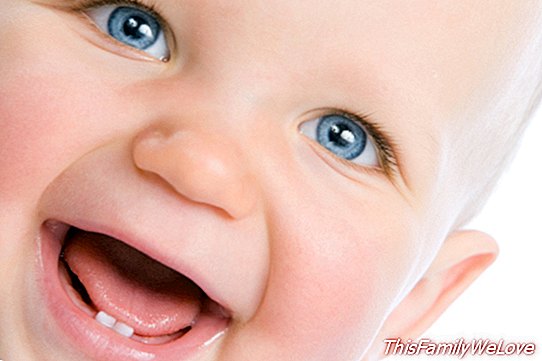10 false myths about infant teeth
The baby has excess saliva, rejects food, is irritable, puts his hand and other objects in his mouth and sleeps worse than before. Although most parents tend to think all this means that the little one is coming out of the teeth, these signs, contrary to popular belief, do not have to be indicative of the infant teeth, a discomfort of the baby that is surrounded by myths.
As indicated by Dr. Paloma Nacher, neonatologist and head of the pediatric emergency service at Hospital La Milagrosa in Madrid, "the biggest sign that a child's teeth are forming or coming out is inflammation, the sensitivity and / or redness of the gums".
To disassemble 10 false myths about infant teeth It is important to know that drooling, irritability, inappetence, fever, diarrhea or respiratory infections are not a direct consequence of the appearance of the first teeth, but could occur somehow, in a slight way and for a short time coinciding with the time of teething.
10 false myths about infant teeth

In fact, it is estimated that there may be a 35% of babies who do not experience any symptoms with the appearance of milk teeth. Therefore, to reassure parents, today we unveil the 10 false myths in relation to the appearance of baby teeth:
1. Drooling: The increase in saliva may be due to the fact that the glands have accelerated their operation for the intake of foods other than milk.
2. Snot: The presence of mucus does not have to be attributed to the exit of the teeth. The pediatrician should be consulted if they last several days and, even more so, if they are accompanied by a fever.
3. Fever: The exit of the teeth does not have to cause fever, although it can increase the body temperature somewhat because of the inflammation of the gums. It may be that your immune system is somewhat weaker and, therefore, contract some disease that generates the rise of fever.
4. Diarrhea: As with fever, it is usually thought that teething causes colitis or softer or constant bowel movements, but this is not the case. If this happens, you should see your doctor to see what triggered the diarrhea, such as gastroenteritis or an allergic reaction.
5. Inapetencia: the little ones do not lose the desire to eat, but the discomfort in the gums makes them eat less or it costs them more to eat the food.
6. Use of medications: the use of drugs to numb the gums is discouraged, since all they do is harden them and delay their appearance. Instead, recommends the use of a ring or ring to bite.
7. Teethers: Although the cold can alleviate the sensitivity and inflammation of the gums, it is not advisable to introduce the teethers in the freezer since they could cause burns to the mucosa of the mouth. If they can be put in the fridge so they are cold.
8. Cleaning: The oral hygiene of children should begin to be done with a brush when the child has at least eight teeth. Until then, you can give water after eating to drag the remains of food that may be on the teeth or rub them with gauze dampened with water.
9. Age of teething: the exit of the teeth depends on the moment in which the parents came out. Although it is usually between six and eight months and the average is that at 30 months the child already has 20 baby teeth, these rhythms can vary a lot among the little ones. It is advisable to consult the pediatrician when the child from 18 months of age does not have any teeth to assess the situation.
10. Teeth exit order: Although there is a more or less common pattern for the appearance of baby teeth, it can vary a lot between children. So parents of children who do not follow these schemes to the letter, do not have to think that children have some kind of problem or that they will develop older, with the final teeth.
However, before any doubt, it is always better to go to the specialist who will be the best to evaluate and diagnose the child.
ISabel Guevara
Advice. Dr. Dove Nacher. Neonatologist and head of the pediatric emergency service at La Milagrosa Hospital in Madrid




